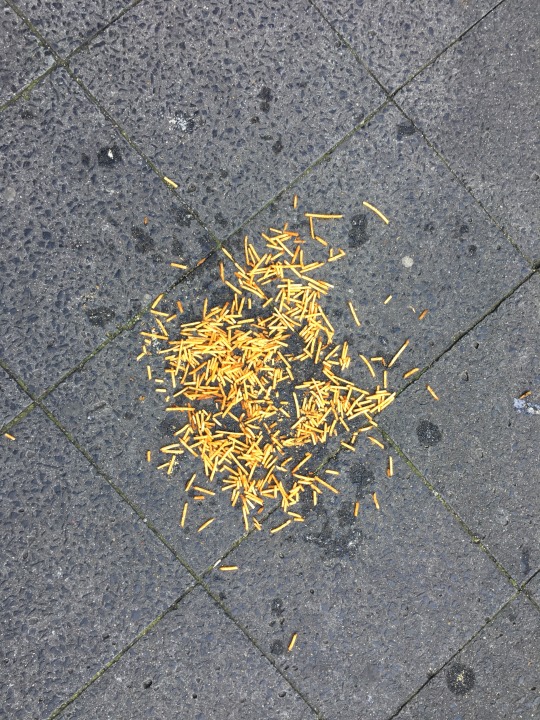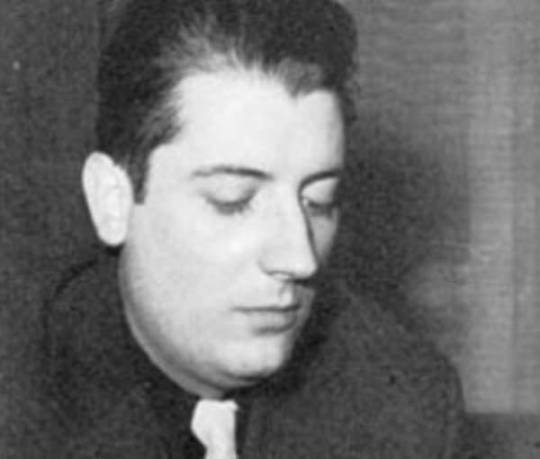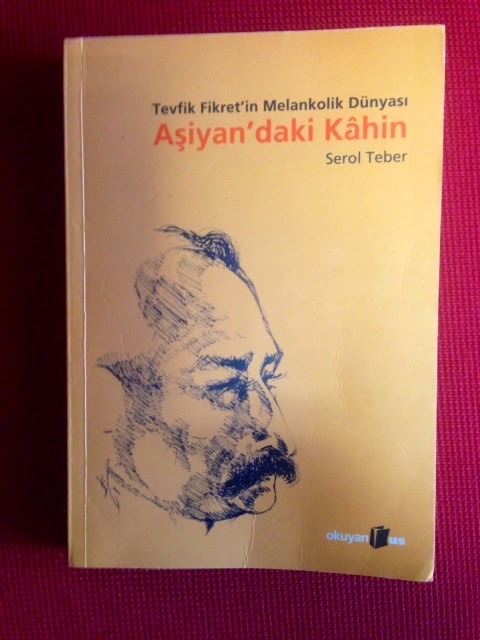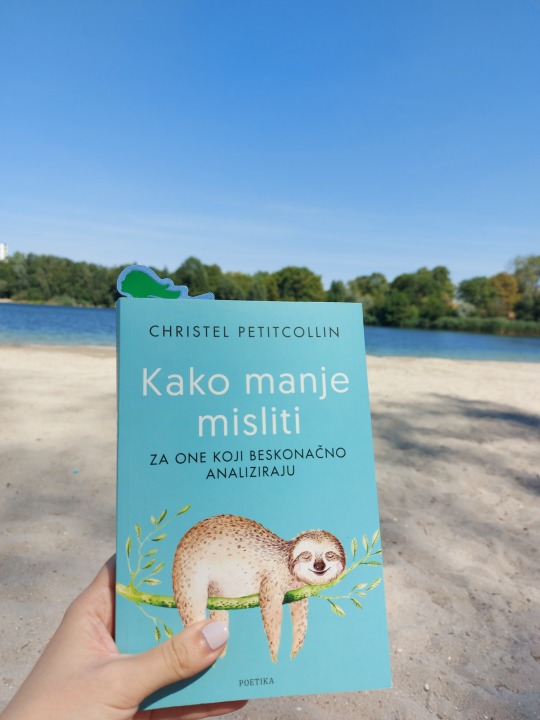#poetika
Text
geçilmemiş yollardan
gecenin kordonlarından gel
ahmatova - selected poems
#anna ahmatova#selected poems#love poems#poems#poetry#poetika#tumblr şiir#seçilmiş şiirler#şiir blog#şiir#şiir alıntısı#şiir sokakta#blogger#edebiyat#kitap#felsefe#blog#kitap kurdu
11 notes
·
View notes
Text

Federica Bosco, Govorili su da sam preosjetljiva: ⭐️⭐️⭐️⭐️⭐️
#federica bosco#govorili su da sam preosjetljiva#poetika#2021#books#life#quotes#plants#window#view#architecture#church#june 2023#365project#myupload
2 notes
·
View notes
Photo

STREETFOOD BERLIN
PASSPORT GIRLS
0 notes
Text
"susma da bir seslenmedir."
#poetika#ilhan berk#kitap alıntısı#kitapönerisi#kitap#kitap sözü#gecenin sözü#geceye not#geceyebirnotbırak#geceyebirsozbirak#not#alıntı#alıntılar#türkçe alıntılar#türkçe sözler#türkçe şiirler
1 note
·
View note
Text
A class on fairy tales (1)
As you might know (since I have been telling it for quite some times), I had a class at university which was about fairy tales, their history and evolution. But from a literary point of view - I am doing literary studies at university, it was a class of “Literature and Human sciences”, and this year’s topic was fairy tales, or rather “contes” as we call them in France. It was twelve seances, and I decided, why not share the things I learned and noted down here? (The titles of the different parts of this post are actually from me. The original notes are just a non-stop stream, so I broke them down for an easier read)
I) Book lists
The class relied on a main corpus which consisted of the various fairytales we studied - texts published up to the “first modernity” and through which the literary genre of the fairytale established itself. In chronological order they were: The Metamorphoses of Apuleius, Lo cunto de li cunti by Giambattista Basile, Le Piacevoli Notti by Giovan Francesco Straparola, the various fairytales of Charles Perrault, the fairytales of Marie-Catherine d’Aulnoy, and finally the Kinder-und Hausmärchen of Jacob and Wilhelm Grimm. There is also a minor mention for the fables of Faerno, not because they played an important historical role like the others, but due to them being used in comparison to Perrault’s fairytales ; there is also a mention of the fairytales of Leprince de Beaumont if I remember well.
After giving us this main corpus, we were given a second bibliography containing the most famous and the most noteworthy theorical tools when it came to fairytales - the key books that served to theorize the genre itself. The teacher who did this class deliberatly gave us a “mixed list”, with works that went in completely opposite directions when it came to fairytale, to better undersant the various differences among “fairytale critics” - said differences making all the vitality of the genre of the fairytale, and of the thoughts on fairytales. Fairytales are a very complex matter.
For example, to list the English-written works we were given, you find, in chronological order: Bruno Bettelheim’s The Uses of Enchantment ; Jack David Zipes’ Fairy Tales and the Art of Subversion ; Robert Bly’s Iron John: A Book about Men ; Marie-Louise von Franz, Interpretation of Fairy Tales ; Lewis C. Seifert, Fairy Tales, Sexuality and Gender in France (1670-1715) ; and Cristina Bacchilega’s Postmodern Fairy Tales: Gender and Narrative Strategies. If you know the French language, there are two books here: Jacques Barchilon’s Le conte merveilleux français de 1690 à 1790 ; and Jean-Michel Adam and Ute Heidmann’s Textualité et intertextualité des contes. We were also given quite a few German works, such as Märchenforschung und Tiefenpsychologie by Wilhelm Laiblin, Nachwort zu Deutsche Volksmärchen von arm und reich, by Waltraud Woeller ; or Märchen, Träume, Schicksale by Otto Graf Wittgenstein. And of course, the bibliography did not forget the most famous theory-tools for fairytales: Vladimir Propp’s Morfologija skazki + Poetika, Vremennik Otdela Slovesnykh Iskusstv ; as well as the famous Classification of Aarne Anti, Stith Thompson and Hans-Jörg Uther (the Aarne-Thompson-Uther Classification, aka the ATU).
By compiling these works together, one will be able to identify the two main “families” that are rivals, if not enemies, in the world of the fairytale criticism. Today it is considered that, roughly, if we simplify things, there are two families of scholars who work and study the fairy tales. One family take back the thesis and the theories of folklorists - they follow the path of those who, starting in the 19th century, put forward the hypothesis that a “folklore” existed, that is to say a “poetry of the people”, an oral and popular literature. On the other side, you have those that consider that fairytales are inscribed in the history of literature, and that like other objects of literature (be it oral or written), they have intertextual relationships with other texts and other forms of stories. So they hold that fairytales are not “pure, spontaneous emanations”. (And given this is a literary class, given by a literary teacher, to literary students, the teacher did admit their bias for the “literary family” and this was the main focus of the class).
Which notably led us to a third bibliography, this time collecting works that massively changed or influenced the fairytale critics - but this time books that exclusively focused on the works of Perrault and Grimm, and here again we find the same divide folklore VS textuality and intertextuality. It is Marc Soriano’s Les contes de Perrault: culture savante et traditions populaires, it is Ernest Tonnelat’s Les Contes des frères Grimm: étude sur la composition et le style du recueil des Kinder-und-Hausmärchen ; it is Jérémie Benoit’s Les Origines mythologiques des contes de Grimm ; it is Wilhelm Solms’ Die Moral von Grimms Märchen ; it is Dominqiue Leborgne-Peyrache’s Vies et métamorphoses des contes de Grimm ; it is Jens E. Sennewald’ Das Buch, das wir sind: zur Poetik der Kinder und-Hausmärchen ; it is Heinz Rölleke’s Die Märchen der Brüder Grimm: eine Einführung. No English book this time, sorry.
II) The Germans were French, and the French Italians
The actual main topic of this class was to consider the “fairytale” in relationship to the notions of “intertextuality” and “rewrites”. Most notably there was an opening at the very end towards modern rewrites of fairytales, such as Angela Carter’s The Bloody Chamber, “Le petit chaperon vert” (Little Green Riding Hood) or “La princesse qui n’aimait pas les princes” (The princess who didn’t like princes). But the main subject of the class was to see how the “main corpus” of classic fairytales, the Perrault, the Grimm, the Basile and Straparola fairytales, were actually entirely created out of rewrites. Each text was rewriting, or taking back, or answering previous texts - the history of fairytales is one of constant rewrite and intertextuality.
For example, if we take the most major example, the fairytales of the brothers Grimm. What are the sources of the brothers? We could believe, like most people, that they merely collected their tale. This is what they called, especially in the last edition of their book: they claimed to have collected their tales in regions of Germany. It was the intention of the authors, it was their project, and since it was the will and desire of the author, it must be put first. When somebody does a critical edition of a text, one of the main concerns is to find the way the author intended their text to pass on to posterity. So yes, the brothers Grimm claimed that their tales came from the German countryside, and were manifestations of the German folklore.
But... in truth, if we look at the first editions of their book, if we look at the preface of their first editions, we discover very different indications, indications which were checked and studied by several critics, such as Ernest Tomelas. In truth, one of their biggest sources was... Charles Perrault. While today the concept of the “tales of the little peasant house, told by the fireside” is the most prevalent one, in their first edition the brothers Grimm explained that their sources for these tales were not actually old peasant women, far from it: they were ladies, of a certain social standing, they were young women, born of exiled French families (because they were Protestants, and thus after the revocation of the édit de Nantes in France which allowed a peaceful coexistance of Catholics and Protestants, they had to flee to a country more welcoming of their religion, aka Germany). They were young women of the upper society, girls of the nobility, they were educated, they were quite scholarly - in fact, they worked as tutors/teachers and governess/nursemaids for German children. For children of the German nobility to be exact. And these young French women kept alive the memory of the French literature of the previous century - which included the fairytales of Perrault.
So, through these women born of the French emigration, one of the main sources of the Grimm turns out to be Perrault. And in a similar way, Perrault’s fairytales actually have roots and intertextuality with older tales, Italian fairytales. And from these Italian fairytales we can come back to roots into Antiquity itself - we are talking Apuleius, and Virgil before him, and Homer before him, this whole classical, Latin-Greek literature. This entire genealogy has been forgotten for a long time due to the enormous surge, the enormous hype, the enormous fascination for the study of folklore at the end of the 19th century and throughout all of the 20th.
We talk of “types of fairytales”, if we talk of Vladimir Propp, if we talk of Aarne Thompson, we are speaking of the “morphology of fairytales”, a name which comes from the Russian theorician that is Propp. Most people place the beginning of the “structuralism” movement in the 70s, because it is in 1970 that the works of Propp became well-known in France, but again there is a big discrepancy between what people think and what actually is. It is true that starting with the 70s there was a massive wave, during which Germans, Italians and English scholars worked on Propp’s books, but Propp had written his studies much earlier than that, at the beginning of the 20th century. The first edition of his Morphology of fairytales was released in 1928. While it was reprinted and rewriten several times in Russia, it would have to wait for roughly fifty years before actually reaching Western Europe, where it would become the fundamental block of the “structuralist grammar”. This is quite interesting because... when France (and Western Europe as a whole) adopted structuralism, when they started to read fairytales under a morphological and structuralist angle, they had the feeling and belief, they were convinced that they were doing a “modern” criticism of fairytales, a “new” criticism. But in truth... they were just repeating old theories and conceptions, snatched away from the original socio-historical context in which Propp had created them - aka the Soviet Union and a communist regime. People often forget too quickly that contextualizing the texts isn’t only good for the studied works, we must also contextualize the works of critics and the analysis of scholars. Criticism has its own history, and so unlike the common belief, Propp’s Morphology of fairytales isn’t a text of structuralist theoricians from the 70s. It was a text of the Soviet Union, during the Interwar Period.
So the two main questions of this class are. 1) We will do a double exploration to understand the intertextual relationships between fairytales. And 2) We will wonder about the definition of a “fairytale” (or rather of a “conte” as it is called in French) - if the fairytale is indeed a literary genre, then it must have a definition, key elements. And from this poetical point of view, other questions come forward: how does one analyze a fairytale? What does a fairytale mean?
III) Feuding families
Before going further, we will pause to return to a subject talked about above: the great debate among scholars and critics that lasted for decades now, forming the two branches of the fairytale study. One is the “folklorist” branch, the one that most people actually know without realizing it. When one works on fairytale, one does folklorism without knowing it, because we got used to the idea that fairytale are oral products, popular products, that are present everywhere on Earth, we are used to the concept of the universality of motives and structures of fairytales. In the “folklorist” school of thought, there is an universalism, and not only are fairytales present everywhere, but one can identify a common core for them. It can be a categorization of characters, it can be narrative functions, it can be roles in a story, but there is always a structure or a core. As a result, the work of critics who follow this branch is to collect the greatest number of “versions” of a same tale they can find, and compare them to find the smallest common denominator. From this, they will create or reconstruct the “core fairytale”, the “type” or the “source” from which the various variations come from.
Before jumping onto the other family, we will take a brief time to look at the history of the “folklorist branch” of the critic. (Though, to summarize the main differences, the other family of critics basically claims that we do not actually know the origin of these stories, but what we know are rather the texts of these stories, the written archives or the oral records).
So the first family here (that is called “folklorist” for the sake of simplicity, but it is not an official or true appelation) had been extremely influenced by the works of a famous and talented scholar of the early 20th century: Aarne Antti, a scholar of Elsinki who collected a large number of fairytales and produced out of them a classification, a typology based on this theory that there is an “original fairytale type” that existed at the beginning, and from which variants appeared. His work was then continued by two other scholars: Stith Thompson, and Hans-Jörg Uther. This continuation gave birth to the “Aarne-Thompson” classification, a classification and bibliography of folkloric fairytales from around the world, which is very often used in journals and articles studying fairytales. Through them, the idea of “types” of fairytales and “variants” imposed itself in people’s minds, where each tale corresponds to a numbered category, depending on the subjects treated and the ways the story unfolds (for example an entire category of tale collects the “animal-husbands”. This classification imposed itself on the Western way of thinking at the end of the first third of the 20th century.
The next step in the history of this type of fairytale study was Vladimir Propp. With his Morphology of fairytales, we find the same theory, the same principle of classification: one must collect the fairytales from all around the world, and compare them to find the common denominator. Propp thought Aarne-Thompson’s work was interesting, but he did complain about the way their criteria mixed heterogenous elements, or how the duo doubled criterias that could be unified into one. Propp noted that, by the Aarne-Thompson system, a same tale could have two different numbers - he concluded that one shouldn’t classify tales by their subject or motif. He claimed that dividing the fairytales by “types” was actually impossible, that this whole theory was more of a fiction than an actual reality. So, he proposed an alternate way of doing things, by not relying on the motifs of fairytales: Propp rather relied on their structure. Propp doesn’t deny the existence of fairytales, he doesn’t put in question the categorization of fairytales, or the universality of fairytales, on all that he joins Aarne-Thompson. But what he does is change the typology, basing it on “functions”: for him, the constituve parts of fairytales are “functions”, which exist in limited numbers and follow each other per determined orders (even if they are not all “activated”). He identified 31 functions, that can be grouped into three groups forming the canonical schema of the fairytale according to Propp. These three groups are an initial situation with seven functions, followed by a first sequence going from the misdeed (a bad action, a misfortune, a lack) to its reparation, and finally there is a second sequence which goes from the return of the hero to its reward. From these seven “preparatory functions”, forming the initial situation, Propp identified seven character profiles, defined by their functions in the narrative and not by their unique characteristics. These seven profiles are the Aggressor (the villain), the Donor (or provider), the Auxiliary (or adjuvant), the Princess, the Princess’ Father, the Mandator, the Hero, and the False Hero. This system will be taken back and turned into a system by Greimas, with the notion of “actants”: Greimas will create three divisions, between the subject and the object, between the giver and the gifted, and between the adjuvant and the opposant.
With his work, Vladimir Propp had identified the “structure of the tale”, according to his own work, hence the name of the movement that Propp inspired: structuralism. A structure and a morphology - but Propp did mention in his texts that said morphology could only be applied to fairytales taken from the folklore (that is to say, fairytales collected through oral means), and did not work at all for literary fairytales (such as those of Perrault). And indeed, while this method of study is interesting for folkloric fairytales, it becomes disappointing with literary fairytales - and it works even less for novels. Because, trying to find the smallest denominator between works is actually the opposite of literary criticism, where what is interesting is the difference between various authors. It is interesting to note what is common, indeed, but it is even more interesting to note the singularities and differences. Anyway, the apparition of the structuralist study of fairytales caused a true schism among the field of literary critics, between those that believe all tales must be treated on a same way, with the same tools (such as those of Propp), and those that are not satisfied with this “universalisation” that places everything on the same level.
This second branch is the second family we will be talking about: those that are more interested by the singularity of each tale, than by their common denominators and shared structures. This second branch of analysis is mostly illustrated today by the works of Ute Heidmann, a German/Swiss researcher who published alongside Jean Michel Adam (a specialist of linguistic, stylistic and speech-analysis) a fundamental work in French: Textualité et intertextualité des contes: Perrault, Apulée, La Fontaine, Lhéritier... (Textuality and intertextuality of fairytales). A lot of this class was inspired by Heidmann and Adam’s work, which was released in 2010. Now, this book is actually surrounded by various articles posted before and after, and Ute Heidmann also directed a collective about the intertextuality of the brothers Grimm fairytales. Heidmann did not invent on her own the theories of textuality and intertextuality - she relies on older researches, such as those of the Ernest Tonnelat, who in 1912 published a study of the brothers Grimm fairytales focusing on the first edition of their book and its preface. This was where the Grimm named the sources of their fairytales: girls of the upper class, not at all small peasants, descendants of the protestant (huguenots) noblemen of France who fled to Germany. Tonnelat managed to reconstruct, through these sources, the various element that the Grimm took from Perrault’s fairytales. This work actually weakened the folklorist school of thought, because for the “folklorist critics”, when a similarity is noted between two fairytales, it is a proof of “an universal fairytale type”, an original fairytale that must be reconstructed. But what Tonnelat and other “intertextuality critics” pushed forward was rather the idea that “If the story of the Grimm is similar but not identical to the one of Perrault, it is because they heard a modified version of Perrault’s tale, a version modified either by the Grimms or by the woman that told them the tale, who tried to make the story more or less horrible depending on the situation”. This all fragilized the idea of an “original, source-fairytale”, and encouraged other researchers to dig this way.
For example, the case was taken up by Heinz Rölleke, in 1985: he systematized the study of the sources of the Grimm, especially the sources that tied them to the fairytales of Perrault. Now, all the works of this branch of critics does not try to deny or reject the existence of fairytales all over the world. And it does not forget that all over the world, human people are similar and have the same preoccupations (life, love, death, war, peace). So, of course, there is an universality of the themes, of the motives, of the intentions of the texts. Because they are human texts, so there is an universality of human fiction. But there is here the rejection of a topic, a theory, a question that can actually become VERY dangerous. (For example, in post World War II Germany, all researches about fairytales were forbidden, because during their reign the Nazis had turned the fairytales the Grimm into an abject ideological tool). This other family, vein, branch of critics, rather focuses on the specificity of each writing style, of each rewrite of a fairytale, but also on the various receptions and interpretations of fairytales depending on the context of their writing and the context of their reading. So the idea behind this “intertextuality study” is to study the fairytales like the rest of literature, be it oral or written, and to analyze them with the same philological tools used by history studies, by sociology study, by speech analysis and narrative analysis - all of that to understand what were the conditions of creation, of publication, of reading and spreading of these tales, and how they impacted culture.
#fairy tales#fairytales#fairytale#fairy tale#a class on fairytales#brothers grimm#grimm fairytales#charles perrault#perrault fairytales#history of fairytales#vladimir propp#aarne-thompson classification#aarne-thompson#analysis of fairytales#critics of fairytales#book reference#sources#fairytale research#literary vs folklorist#which actually should be more intertextuality vs folklorist
103 notes
·
View notes
Note
🕷️ } uhm. can you do names related to yuri from ddlc ?
I’m running out of commentary ideas. Hashtag knife collecting bestie.
✦ Poeme … Poesie … Poetika … Machairi … Couteau … Biblio … Biblia … Lila … Mauve … Mauverrie … Violette
* Italics means Mai goes by them but is letting me post, etc. Mostly words related to poems and purple.



11 notes
·
View notes
Text
sarı yapraklar,
ölümsüz sonbahar,
çin lokantası,
orospu nidaları,
dönmemeye giden adamlar,
orgazm taklidi yapan kadınlar,
jartiyerli şiirler,
ve çırılçıplak bedenlerdeki,
simsiyah resimler.
ve küçük iskenderin, büyük ruhuna bir kaç dize,
köpek öldüren ve poetika eşliğinde.
3 notes
·
View notes
Text
Poeziju će svi pisati
San je davna i zaboravljena istina
koju više niko ne ume da proveri
sada tuđina peva ko more i zabrinutost
istok je zapadno od zapada lažno kretanje je najbrže
sada pevaju mudrost i ptice moje zapuštene bolesti
cvet između pepela i mirisa
oni koji odbijaju da prežive ljubav
i ljubavnici koji vraćaju vreme unazad
vrt čije mirise zemlja ne prepoznaje
i zemlja koja ostaje verna smrti
jer svet ovaj suncu nije jedina briga
ali jednoga dana
tamo gde je bilo srce stajaće sunce
i neće biti u ljudskom govoru takvih reči
kojih će se pesma odreći
poeziju će svi pisati
istina će prisustvovati u svim rečima
na mestima gde je pesma najlepša
onaj koji je prvi zapevao povući će se
prepuštajući pesmu drugima
ja prihvatam veliku misao budućih poetika:
jedan nesrećan čovek ne može biti pesnik
ja primam na sebe osudu propevale gomile:
KO NE UME DA SLUŠA PESMU SLUŠAĆE OLUJU
ali:
HOĆE LI SLOBODA UMETI DA PEVA
KAO ŠTO SU SUŽNJI PEVALI O NJOJ
B. Miljković

3 notes
·
View notes
Text
Niz konture leđa i valove kože plovio
je demon pretvoren u donju usnu.
Kapljice vinske sluzi ostavljale su trag
pri svakom drhtaju ukusnog mesa.
Ovlaš prebačen plašt preko glatkih
ramena teatralno je klizio niz
ključne kosti oblačeći dojke
u boje boginja smrti. Demon
se vrati do žile kucavice na vratu
osjećajući miris uzburkane krvi
u njoj. Ostavi ugriz koji izmami
blagi uzdah muze i drhtaj bedara
u blizini njegovih, venama
prošaranih, ruku. Stopalo muze
potraži međunožje demona.
Osjećajući njegov puls, zaigra
plesom Erosa odmjeravajući
svaki nabor velikim prstom.
Demon spusti ruke do koljena
muze i ovlaš zadiže svilenu
spavaćicu istraživajući prstima
unutrašnjost bedara. Pod nokte
se uvuče rajski sok i pretvori krv
u mastilo. Muza postade hartija
po kojoj pjesnik proli svoju krv. // Poetika kože

3 notes
·
View notes
Photo

ferdâ senin; senin bu teceddüd, bu inkılâb...
her şey senin değil mi ki zâten?.. sen, ey şebâb,
bir ufk-ı i'tilâ açılır, yükselir hayât;
yükselmeyen düşer: ya terakkî, ya inhitat!
tevfik fikret - ferdâ
#tevfik fikret#serol teber#aşiyan'daki kahin#melankoli#edebyat#şiir#şiir blog#poems#poetika#poetry#ahmet hamdi tanpınar#huzur#saatleri ayarlama enstitüsü#mahur beste#attila ilhan#elde var hüzün#böyle bir sevmek#yahya kemal beyatlı#divan şiiri#divan edebiyatı#nedim#dede efendi#yunus#mesnevi#rumi#mevlana celaleddin rumi#dergah#neyzen tevfik#nazım hikmet ran#sabahattin ali
12 notes
·
View notes
Text

Svjetski dan ljenjivaca 🦥
Christel Petitcollin, Kako manje misliti: ⭐️⭐️⭐️⭐️⭐️
#365project#myupload#october 2023#international sloth day#book#bookworm#mannheim#germany#christel petitcollin#kako manje misliti#i think too much#think less#poetika#2020#self help#lake#book in nature
0 notes
Text
çok kötü geceler geçiriyorum ama 22'imde bir poetika yazacağım
2 notes
·
View notes
Text
Hep daha çok okuyayım diye;
haziran
• bibliyomani, gustave flaubert
• kim nasıl ölüyor, émile zola
• poetika, ilhan berk
• kağıt gemiler, ayşegül çelik
• venedik taciri, william shakespeare
11 notes
·
View notes
Text
Zlatko Gall: Ry Cooder
15. ožujka 1947. rođen je Ry Cooder. Nije samo riječ o vrhunskom gitaristu, session-glazbeniku, izvođaču i autoru filmske glazbe već i stilisti s nagnućem prema etnomuzikološkim istraživanjima. Cooderov izvorni gitaristički stil koji je dao pečat svim različitim projektima osebujan je country-blues, a glazbena poetika temelji se na iznimnoj sposobnosti apsorbiranja različitih glazbenih iskustava…

View On WordPress
0 notes